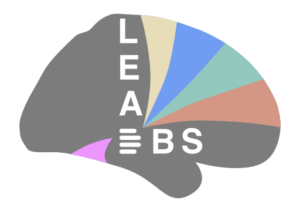Hi Markus,
Regarding export from electrodes to nifti: Would it help you to be able to export to a different surface format?
E.g. you can import .ply files in nearly any 3D visualization software including 3D Slicer and SurfIce. To export to .ply format, select the patients in Lead-DBS and then choose Export -> PLY from the Tools Menu of the main Lead GUI.
Exporting to nifti in general is not the best idea since electrodes are not the best option to be voxelized (they are small and you’d need high resolution to do so). However, you could convert the .PLY files to a voxelized version e.g. using Iso2Mesh by Qianqian Fang: http://iso2mesh.sourceforge.net/cgi-bin/index.cgi
Re the CT question: It’s not supported to rename files to l* or gl* anymore since Lead-DBS now reconstructs electrodes hybridly in native and MNI space. This may have worked in some early versions but doesn’t work anymore. Also, please note that any l* or gl* file needs to be in MNI space (!). That’s basically what l* and gl* prefixes stand for.
You have two options: 1. place a postop_ct.nii alongside your anat.nii or anat_t1.nii file into the folder and do co-registration between postop_ct and the primar anat file in Lead-DBS. This will generate the rpostop_ct.nii which will then be warped into MNI space in the normalization step.
2. place an rpostop_ct.nii alongside your anat.nii or anat_t1.nii into the patient folder. Lead-DBS will assume that the two files are exactly co-registered, i.e. have the same voxel resolution and nifti-header matrix.
After this, you need to run a valid normalization step. I’d recommend to use the ANTs SyN approach or if you have multiple anatomical files (e.g. anat.nii (=T2), anat_t1.nii (=T1), anat_pd.nii (=PD) and dti.nii (will generate fa2anat.nii file and white-matter anisotropy will be used for normalization, too) the ANTs Multimodal approach.
You can of course program your own normalization routine if you want things to be warped differently. It may not be completely trivial but if you’re good at programming, it’s doable. Any file called ea_normalize_*.m will be recognized by the Lead-DBS GUI.
Re the second question: I’d always prefer T2 for postop but T1 works as well. You can also call your postop t2 “postop_tra.nii” and your t1 “postop_cor.nii” and both will be normalized into MNI space. You can then swap image names to see which gives you the better precision in the manual reconstruction step.
Finally, as described above, the normalization step is an integral part of the Lead-DBS routine, so you definitely need to perform it. Nothing will work if you don’t. Still, this doesnt limit you to working inside MNI space. You can visualize results in either MNI or native space lateron. Since Lead-DBS has originally been designed as a research tool, MNI space based routines are much better maintained and tested.
So to answer your question, no, normalization is not only used to get structures to your image.
Hope this helps! Let me know if you have further questions!
Best, Andy

